Reviews
Trent Harris
USA, 2000
Credits
Review by Katherine Follett
Posted on 12 May 2008
Source projected DVD
Related articles
Reviews The Beaver Trilogy by Rumsey
Categories The 2008 Independent Film Festival of Boston
In her “This American Life” story on The Beaver Trilogy, producer Starlee Kine laments that she will never be able to see the film for the first time. She then goes on to recreate, almost shot-for-shot, that exact experience of seeing the film with fresh eyes. Because of the film’s limited release, “This American Life” is the only chance most people will ever have to experience The Beaver Trilogy; you can’t say she ruined it for you, because she has every reason to expect you’ll never see it. But for those of us lucky enough to locate a screening or a copy of the film, that first experience is now gone, even before the first frame. I wish I could write solely about my experience watching The Beaver Trilogy, instead of my experience listening to it and thinking about it via public radio. But the film is so much about expectations, about interpretation, and about the viewer’s personal responses that it’s impossible to separate out my reaction to seeing it from my reaction to hearing about it or my reaction to, say, reading a review of it.
The three parts of the trilogy are as follows. In the first, filmmaker Trent Harris is in the desolate parking lot of a Utah television station testing a video camera when a goofy, enthusiastic young man comes up to him and, thrilled that he might be on TV, starts rattling off impressions and stories about his life. The man’s cheerful guilelessness is instantly both strange and winning. In the next few scenes, Harris travels to the man’s hometown of Beaver, Utah to film a talent show, the culmination of which is the young man’s utterly earnest performance in drag as Olivia Newton-John. The second part of the trilogy is a (barely) fictionalized recreation of the nonfiction footage, with the goofy kid played by a then-unknown Sean Penn. The third is yet another recreation, this time more fleshed-out, with scenes of the young man’s hometown and the aftermath of his gender-role-shattering performance. It stars a then-unknown Crispin Glover.
Part of the film’s power is simply the supreme weirdness of seeing two huge stars in these tiny, cheap-looking films, dressing up like Olivia Newton-John and warbling off-key through a cheesy 70’s ballad. But another part of its strangeness is seeing the process of the filmmaker trying to interpret his own footage. In each fictionalization, the director adds more context, more narrative structure, and more of an emotional arc to what was first just a string of shots of this dorky Beaver kid and his over-the-top talent-show performance. Even more interestingly, the director actually casts himself in each of the fictionalized versions. In them, he becomes “Terry,” a slightly slimy, mustachioed hotshot who ignores the Beaver kid’s pleas to rethink broadcasting his drag performance. One can’t help reading Harris’s own feelings about the Beaver kid and about himself into these narratives; it was one of the principal points of Kine’s radio story about the film. Perhaps the biggest sin a documentary filmmaker can commit is exploitation, being invited into the lives of his or her subjects, only to take the details of those lives and hold them up for ridicule or condemnation. In his fictionalizations, Harris seems to want to make up for his own supposed exploitation, giving the Beaver kid a history, an antagonist to fight (“Terry” the filmmaker), and a happy ending. And in the third, most fleshed-out version, the result is a sympathetic portrayal of an eccentric outsider breaking free of small-town prejudice.
Unfortunately, I happen to totally disagree with Harris’s read on the Beaver kid. In the first part of the trilogy, the filmmaker seems both charmed and amused by the Beaver kid’s innocent enthusiasm, his corniness, and his small-town naiveté. In the fictionalizations, the Beaver kid’s mannerisms make him the object of ridicule both in his close-minded small town and by the filmmakers. While listening to “This American Life”, I pictured the kid as hopelessly unattractive, with maybe bad teeth and slumping posture. Upon seeing the film, I was surprised to see that the kid had nice features. As I watched the kid do his goofy, giggling impressions, something dawned on me: they were in Utah. The Beaver kid was almost undoubtedly Mormon. And many of the Mormons I’ve met have just that kind of cheerful guilelessness that seems so dorky against our culture’s relentless coolness and irony. Compared to the rest of America, many young Mormons do seem bizarrely wholesome. But to the rest of the citizens of Beaver, Utah, the Beaver kid could very well have been pretty normal.
The other place in which I disagreed with Harris’s interpretation of the documentary is the drag performance. In all three parts of the trilogy, we see the Beaver kid getting his makeup and wig applied as he tries to reassure the filmmakers that he is not, in fact, gay, a drag queen, or particularly obsessed with Olivia Newton-John. In the fictionalizations, this reassurance comes off as false, with Newton-John posters and music featuring prominently throughout. And then there is the performance itself. In all three parts, the performance is either hilarious or intensely uncomfortable, or both, depending on how you view the kid. But in re-creating the drag performances in each of his fictionalizations, Harris drops a key detail: in the original documentary, the Beaver kid had a live backup band. This means not only were others in the town aware that the kid was going to perform in drag, but they rehearsed with him and were willing to be a part of the show. One of my favorite parts of the film was another scene that got left out of the fictionalizations—the backup band returning to the stage with the Beaver kid, now wearing regular male clothing, to perform a Barry Manilow impression. The band is as happily enthusiastic as the Beaver kid, some of them in wigs and silly hats. Obviously, nobody on stage was condemning the Beaver kid for dressing in drag, or taking it so seriously that it made them uncomfortable. In the fictionalizations, the drag performance becomes solo and a surprise, with the kid singing along to a cassette recording of Newton-John. The townspeople are shocked and squirming, and the filmmaker is licking his chops, humiliating the Beaver kid to the point where he contemplates suicide.
I believe Harris may have felt that filming and laughing at the drag performance was exploitive, and so he tried to re-create the incident, this time giving the Beaver kid our sympathies instead of our ridicule. But I never felt that the Beaver kid was initially being exploited—at least in his (the kid’s) mind. He may have just been, as he tried to convince the filmmakers, doing something goofy for a laugh. If he looked ridiculous, it was intentional, and his earnestness was not the painful earnestness of a man who wants to be a woman or a star, but the deadpan earnestness of somebody like Will Ferrell acting dumb. Against the unsophisticated background of the small-town talent show, I’m sure many people did interpret the Beaver kid’s performance as awkward and maybe desperate. But I don’t think the Beaver kid himself ever thought of it that way. So when Harris develops a context in which the Beaver kid becomes an abused naïf, I suddenly felt like the film became more exploitive, not less. In the original documentary, the Beaver kid intentionally gives up his dignity for a comedy performance. In the fictionalizations, he unintentionally loses his dignity because he’s hopelessly misguided. In the first part of the film, the kid is in control of his performance and his life. But in the second two parts, the director has taken control, putting his own fictional spin on the events, leaving the happy-go-lucky Beaver kid seeming powerless and, I hate to say it, exploited.
I should say that whatever I think about The Beaver Trilogy, the Beaver kid, and the director’s intentions, the film is a powerful document of the process of filmmaking, of creating fiction, or of creating any kind of art. I only reacted so strongly because the film has such a compelling intention and a powerful effect. When you watch The Beaver Trilogy, you find yourself going through the same process that Harris must have gone through when he filmed it. We see this strange but endearing character. He does some really weird things that could come off as funny or ridiculous or sad or all three. We then have to look at this person and decide for ourselves who he is, what he’s thinking, and why he does what he does. In my mind, he is and does one thing, and in Harris’ mind, he is and does something entirely different. Both Harris and I have evidence for our interpretations. Both of us might be wrong. Either way, The Beaver Trilogy accomplishes something astonishing. It documents the gap between an event and its interpretation, between an action and our memory of it, between the world and our perceptions.
More The 2008 Independent Film Festival of Boston
-

Crawford
2008 -

Vexille
2007 -

American Teen
2008 -

Mister Lonely
2007 -

Intimidad
2008 -
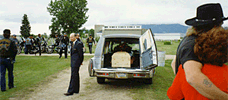
Meadowlark
2008 -

Second Skin
2008 -
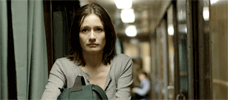
Transsiberian
2008 -

The Linguists
2008 -

Big Man Japan
2007 -

At the Death House Door
2008 -
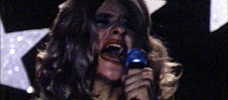
The Beaver Trilogy
2000 -
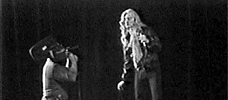
The Beaver Trilogy
2000 -

Nerdcore Rising
2008 -
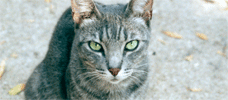
Goliath
2008 -
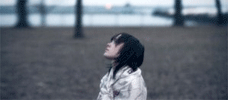
The Tracey Fragments
2007 -

Saviours
2008 -
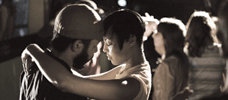
Medicine for Melancholy
2008 -

Severed Ways
2007 -

Not Your Typical Bigfoot Movie
2008 -

Not Your Typical Bigfoot Movie
2008 -

Jump!
2007 -

Encounters at the End of the World
2007
We don’t do comments anymore, but you may contact us here or find us on Twitter or Facebook.



